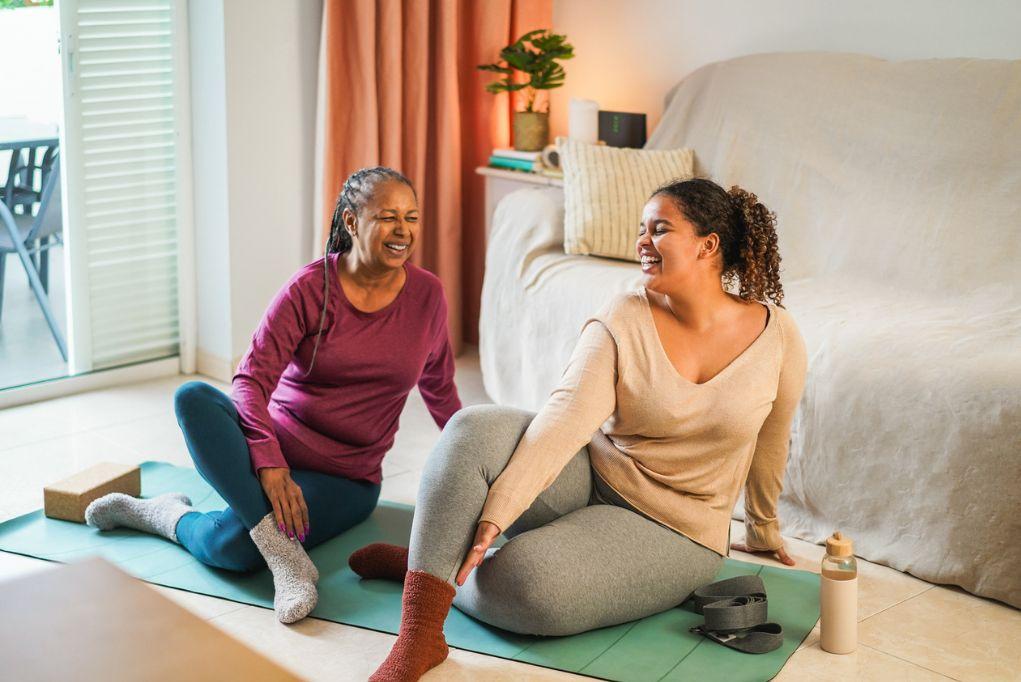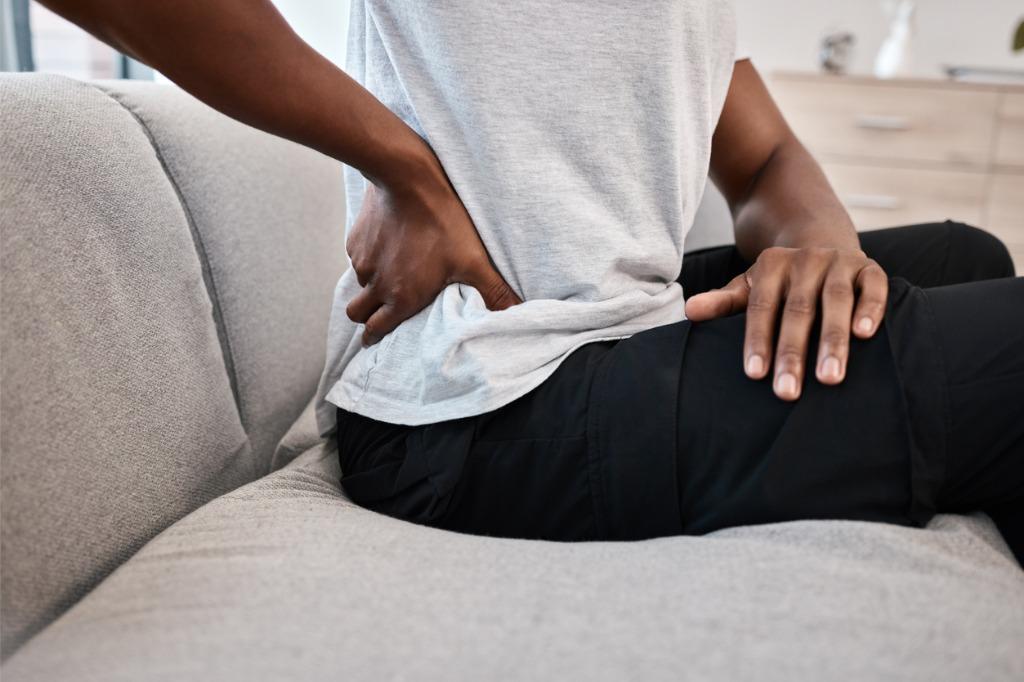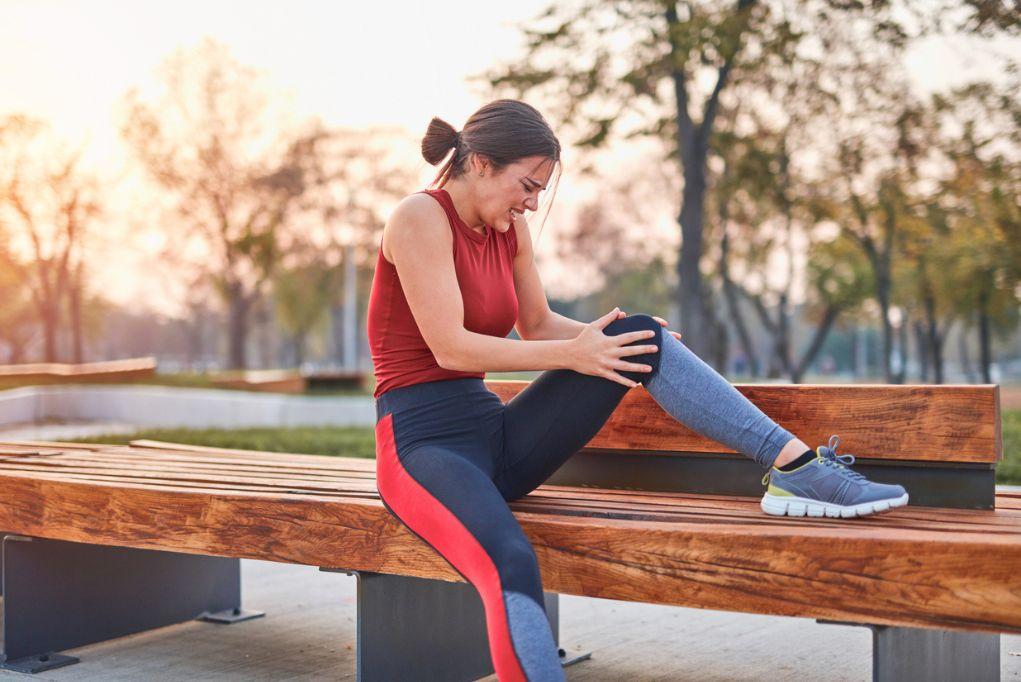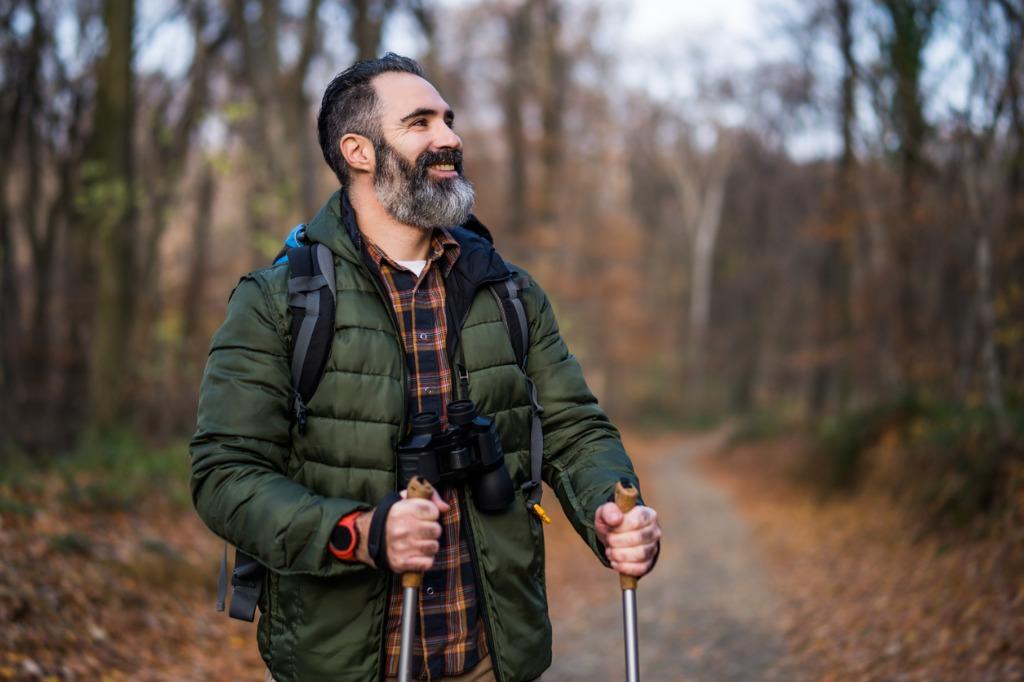How to Exercise in Winter Without Going to the Gym
When the temperatures drop and Missouri’s wind and snow make their annual appearance, it’s tempting to hibernate indoors and put your fitness routine on hold. The cold, icy conditions, and shorter daylight hours can make it challenging to stay motivated, especially if you prefer outdoor workouts or don’t have a gym membership.
Winter doesn’t have to mean sacrificing your fitness goals or your orthopedic health. In fact, staying active during the colder months is crucial for maintaining joint mobility, muscle strength, and overall wellness.
You don’t need a gym to exercise in winter effectively. With the right strategies, you can stay fit, healthy, and injury-free all season long, right from the comfort of your home or through safe outdoor activities adapted for winter conditions.

Why Winter Exercise Matters for Your Orthopedic Health
Staying active during cold months is especially important for your musculoskeletal health. Here is why.
Joint Health and Mobility
Cold weather can cause joints to feel stiffer and more painful, particularly if you have arthritis or previous injuries. Regular movement helps maintain synovial fluid production, which lubricates your joints and keeps them moving smoothly. When you’re inactive, joints can become even stiffer and more uncomfortable.
Muscle Strength and Balance
Winter inactivity leads to muscle deconditioning, which increases your risk of falls and injuries when you do venture outside on icy sidewalks or snow-covered surfaces. Maintaining strength and balance through winter exercise helps protect you from slips and falls.
Bone Density
Weight-bearing exercises are essential for maintaining bone density, which is particularly important as we age. Taking a few months off can impact bone health, especially for those at risk for osteoporosis.
Mental Health and Mood
Seasonal affective disorder (SAD) and winter blues are real challenges for many people. Exercise releases endorphins, reduces stress, and helps combat the mood changes that can come with shorter days and less sunlight.
Preventing Spring Injuries
If you take winter off and try to jump back into your spring routine at full intensity, you’re setting yourself up for strains, sprains, and overuse injuries. Consistent winter exercise helps you maintain your fitness baseline so you can transition smoothly into more active months.
Understanding Winter Exercise Challenges
Living in Missouri means dealing with specific winter weather patterns that can make exercise more challenging. Understanding these challenges helps you plan safe, effective workouts.
Cold Temperatures and Wind Chill
Missouri winters can bring cold temperatures and wind chills that make it feel even colder. Extreme cold can increase the risk of cold-induced injuries, frostbite, or hypothermia if you’re not properly prepared.
Ice and Snow
Snow and ice make outdoor surfaces treacherous. Slippery sidewalks, parking lots, and driveways significantly increase fall risk, which can lead to fractures, sprains, and other orthopedic injuries.
Unpredictable Weather
Missouri weather can be unpredictable, with rapid temperature changes, freezing rain, and sudden winter storms. This variability makes it difficult to plan consistent outdoor exercise routines.
Reduced Daylight
Shorter winter days mean less time to exercise outdoors in daylight. Exercising in the dark increases the risk of trips, falls, and visibility issues if you’re walking or jogging in your neighborhood.
These challenges don’t mean you can’t stay active. Choosing smart strategies to exercise safely and effectively throughout winter is important.
How to Exercise in Winter Without Going to the Gym
You don’t need expensive equipment or a gym membership to maintain your fitness during winter. Here are practical, effective ways to stay active without setting foot in a fitness center.
Important: Before starting any new exercise routine, consult with your healthcare provider to ensure the activities are safe and appropriate for your individual health needs.
Indoor Bodyweight Exercises
Your own body weight provides all the resistance you need for an effective strength workout. These exercises require no equipment and can be done in small spaces:
Upper Body:
- Push-ups (modified on knees if needed)
- Tricep dips using a sturdy chair
- Plank holds and variations
- Arm circles and shoulder rotations
Lower Body:
- Squats and squat variations (sumo, single-leg)
- Lunges (forward, reverse, lateral)
- Glute bridges and single-leg bridges
- Calf raises on stairs
- Wall sits
Core:
- Crunches and bicycle crunches
- Russian twists
- Dead bugs
- Bird dogs
- Mountain climbers
Create circuits by performing each exercise for 30-60 seconds with short rest periods between. Three to four rounds provide an excellent full-body workout.
Stair Climbing
If you have stairs in your home, you have a built-in cardio machine. Stair climbing is excellent for cardiovascular fitness, leg strength, and calorie burning. Start with 10-15 minutes and gradually increase duration as your fitness improves.
Stair Exercise Variations:
- Single steps at a moderate pace
- Double steps for increased intensity
- Side steps for lateral strength
- Backwards walking (carefully!) for balance and different muscle engagement
- Step-ups using the bottom step as a platform
Online Workout Videos and Apps
The internet offers endless free workout resources that require minimal or no equipment:
- YouTube fitness channels with routines for all levels
- Fitness apps with guided workouts
- Online yoga and Pilates classes
- Dance cardio routines
- HIIT (High-Intensity Interval Training) workouts
Choose programs that match your fitness level and gradually progress to more challenging workouts.
Resistance Bands and Small Equipment
If you’re willing to invest minimally, a few simple pieces of equipment can dramatically expand your winter workout options:
- Resistance bands: Versatile, inexpensive, and storage-friendly
- Light dumbbells: 5-15 pounds covers most needs for home workouts
- Jump rope: Excellent cardio in a small space
- Yoga mat: Provides cushioning and grip for floor exercises
- Foam roller: Important for recovery and muscle maintenance
These items are often available secondhand and take up minimal space in your home.
Active Home Projects
Turn household chores and projects into fitness opportunities:
- Vigorous cleaning (vacuuming, scrubbing, mopping)
- Organizing and decluttering (lots of lifting, bending, reaching)
- Home improvement projects that require physical effort
- Shoveling snow (more on this later with safety tips)
- Playing actively with children or pets indoors
While these don’t replace dedicated exercise, they keep you moving and contribute to your overall activity level.
Mall Walking
When winter weather is particularly harsh, many shopping centers are open for mall walkers. This provides a climate-controlled, flat, safe surface for walking. The social aspect helps boost motivation and mood during the isolating winter months.
Cozy Cardio: The Winter Exercise Trend That Works
One of the newest fitness trends perfectly suited for winter exercise is “cozy cardio,” a gentler, more inviting approach to cardiovascular exercise that focuses on making workouts feel comfortable and sustainable rather than intense and punishing.
What Is Cozy Cardio?
Cozy cardio is a low-impact approach to cardio exercise performed in a comfortable, pleasant environment. Think walking on a treadmill or marching in place while watching your favorite show, doing gentle dance movements in your pajamas, or following a low-impact cardio video in your living room with the fireplace going.
The concept removes the intimidation and discomfort often associated with traditional cardio workouts and instead emphasizes consistency, enjoyment, and sustainability, perfect for winter when motivation is already challenging.
Benefits of Cozy Cardio for Winter Exercise
- Lower Barrier to Entry: When it’s cold and dark outside, the thought of high-intensity exercise can be overwhelming. Cozy cardio feels achievable, making it easier to actually do it rather than skip workouts.
- Reduced Injury Risk: The low-impact nature is gentler on joints, which is especially important for people with arthritis or previous injuries that feel worse in cold weather.
- Sustainable Consistency: Because it doesn’t leave you exhausted or dreading your next workout, you’re more likely to maintain a consistent routine throughout winter.
- Flexibility: You can adjust intensity based on how you feel each day, making it adaptable to energy levels and joint comfort.
How to Practice Cozy Cardio at Home
Create your own cozy cardio routine with these elements:
Set the Mood:
- Adjust lighting to feel comfortable (warm lamps, candles, natural light)
- Queue up an engaging show, podcast, or playlist
- Wear comfortable clothes that make you feel good
- Have water nearby
Choose Your Movement:
- Walking in place or on a treadmill at a comfortable pace
- Gentle dance movements
- Low-impact aerobics routines
- Stair stepping at a moderate pace
- Marching with arm movements
- Side steps and grapevines
- Light boxing movements
Duration and Intensity:
- Aim for 20-45 minutes at a conversational pace
- You should be able to talk comfortably throughout
- Focus on steady movement rather than intensity
- It’s okay if your heart rate doesn’t skyrocket; consistency matters more
Make It a Ritual:
- Schedule your cozy cardio at the same time daily
- Create a pre-workout routine (making tea, setting up your space)
- Consider it quality “me time” rather than just exercise
The beauty of cozy cardio is that it keeps you moving consistently without the burnout or joint stress that can come from pushing too hard, making it an ideal approach to winter exercise.
Outdoor Winter Exercise in Missouri
If you enjoy outdoor exercise and want to continue during winter, you can do so safely with proper precautions. The key is understanding the risks and taking steps to minimize them.
Dressing for Cold Weather Exercise
Layer Your Clothing:
- Base layer: Moisture-wicking fabric against your skin
- Middle layer: Insulating layer like fleece for warmth
- Outer layer: Windproof and water-resistant jacket
- Remove layers as you warm up to avoid overheating and sweating excessively
Protect Extremities:
- Warm gloves or mittens (mittens are warmer)
- Thermal socks and appropriate winter footwear
- Hat or headband to cover ears
- Neck gaiter or scarf for face protection in extreme cold
Visibility:
- Wear bright colors or reflective gear if exercising in low light
- Consider a headlamp or reflective vest
- Exercise during daylight hours whenever possible
Winter Walking and Hiking
Walking remains an excellent exercise in winter if you take precautions:
- Check conditions first: Look at weather forecasts and recent snowfall
- Choose cleared paths: Stick to well-maintained sidewalks or paths
- Shorten your stride: Take smaller steps on potentially slippery surfaces
- Use traction devices: Consider ice cleats or YakTrax for your shoes
- Bring your phone: Always have a way to call for help if needed
- Walk with a buddy: Safer and more motivating than solo winter walks
- Avoid overexertion: Cold air makes your heart work harder; don’t push too intensely
Snow Shoveling as Exercise
Shoveling snow is genuinely a workout, but it’s also one of the leading causes of winter injuries and cardiac events. If you shovel snow, do it safely:
Before You Start:
- Warm up with 5-10 minutes of light movement
- Dress in layers you can remove as you heat up
- Stay hydrated even though you may not feel thirsty
Proper Technique:
- Push snow rather than lifting when possible
- When lifting, bend at the knees, not the waist
- Keep loads light; make multiple trips with smaller amounts
- Don’t throw snow over your shoulder; walk it to the pile
- Switch sides regularly to avoid overworking one side of your body
- Take frequent breaks, especially if you’re not regularly active
Red Flags to Stop Immediately:
- Chest pain or tightness
- Severe shortness of breath
- Dizziness or lightheadedness
- Unusual fatigue
- Numbness in extremities
Shoveling is particularly risky for people with heart conditions, high blood pressure, or those who are generally sedentary. Consider hiring help or using a snow blower if you’re in a high-risk category.
When to Skip Outdoor Exercise
Even with precautions, certain conditions make outdoor winter exercise dangerous:
- Wind chill below 0°F (-18°C)
- Active winter storms or heavy snowfall
- Icy conditions that haven’t been treated
- Poor visibility
- Warnings or advisories from weather services
- If you have respiratory conditions and air quality is poor from cold
On these days, pivot to indoor exercise options instead.
When Winter Exercise Causes Pain
If you develop pain or discomfort during your winter exercise routine, don’t ignore it. While some muscle soreness is normal, persistent or sharp pain may indicate an injury that needs attention.
Common Winter Exercise Injuries
- Muscle Strains: Often from inadequate warm-up or slipping on ice
- Joint Sprains: Frequently from falls or sudden movements on slippery surfaces
- Tendinitis: Can develop from repetitive movements, especially in cold conditions
- Stress Fractures: May occur from indoor exercise on hard surfaces without proper footwear
- Knee and Hip Pain: Cold weather can aggravate existing arthritis or previous injuries
When to See an Orthopedic Specialist
Seek medical evaluation if you experience:
- Pain that persists more than a few days despite rest
- Significant swelling or bruising
- Joint instability or feeling like it might give out
- Inability to bear weight or perform normal activities
- Pain that worsens rather than improves with home care
- Any injury from a fall or accident on ice or snow
Early treatment prevents minor issues from becoming chronic problems and helps you stay active safely throughout winter and beyond.
Expert Care at Motion Orthopaedics
Staying active through winter is important for your overall health, but it shouldn’t come at the cost of injury or worsening existing orthopedic conditions. At Motion Orthopaedics, our experienced team understands the unique challenges Missouri winters present and how they affect your musculoskeletal health.
Whether you’re dealing with cold-weather joint pain, have questions about safe winter exercise with an existing condition, or need treatment for a winter injury, we’re here to help you stay active year-round with convenient locations throughout Missouri.
Contact Motion Orthopaedics today to schedule an appointment and ensure your winter exercise routine supports your health without risking injury.




